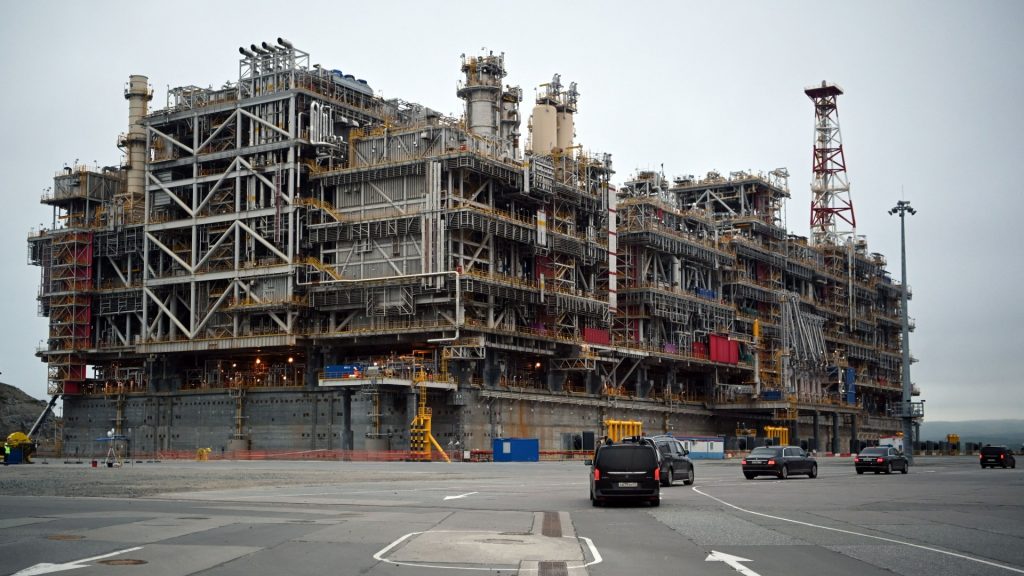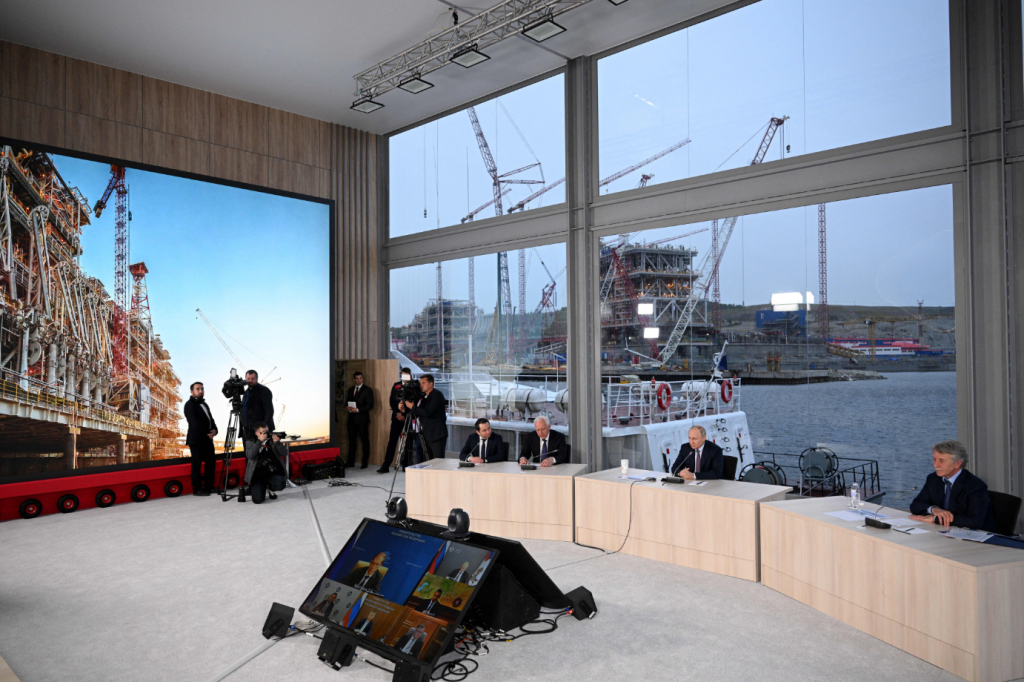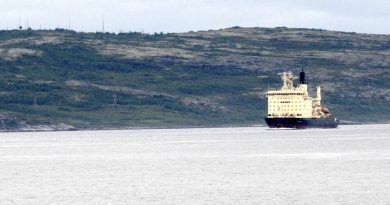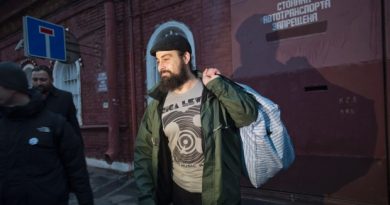Floating LNG platform : big advance for Russia’s expansive Arctic industry

It was a historical moment for Novatek and the Russian natural gas industry. Six years after construction started on the western shore of the Kola Bay, the first ever gravity-based structure for production of LNG left the plant in Belokamenka and set out into the Barents Sea.
Vladimir Putin arrived in the construction center located just few kilometers from the Murmansk City in the afternoon of the 20th of July and was shown around on site by Novatek leader Leonid Mikhelson. In the group was also Murmansk Governor Andrei Chibis and Northwest Russia presidential envoy Aleksandr Gutsan.
“I want to congratulate company Novatek and Leonid Viktorovich Mikhelson with the development of its projects – huge and very important projects for the energy industry and the economy of the country,” Putin underlined in an address.
The visit to Belokamenka was followed by a meeting on the future development of the construction center. According to Putin, the new center must be used with “maximum effect” and developers must proceed “from achieved results towards future results.” In addition to Governor Chibis and Aleksandr Gutsan, the meeting was attended by Minister of the Far East and Arctic Aleksei Chekunkov, Deputy Prime Minister Aleksandr Novak and Presidential Adviser Maksim Oreshkin.
Novatek has already announced that the Belokamenka center will be used to build the projected Murmansk LNG plant. Potentially, the construction center and its major dry docks can also be applied for military purposes.
The president now spends an overwhelming share of Russia’s state finances on the war against Ukraine, and revenues from the energy industry are of crucial importance.
Furthermore, the Arctic LNG projects developed by Novatek are of growing national interest as international sanctions have blocked Russia’s exports of pipeline gas to the EU.
Only few hours after Putin left Belokamenka, the 640,000 ton heavy and more than 110 meter high installation was towed out of the Kola Bay. It was a mighty sight for locals on land as five offshore support ships, two tugs and a rescue vessel accompanied the unit. That includes people in nearby Severomorsk, the headquarters city of the Northern Fleet.

On Sunday morning, the ships had made it east of the Kildin island. The convoy will sail through the Kara Gate and into the Kara Sea before it makes it north of the Yamal Peninsula and into the Ob Bay. The voyage is more than 2,500 km long and will take more than a week.
Weather in the area is good with little winds. Judging from maps from Russian Arctic and Antarctic Research Institute, the ships can expect to encounter drifting sea-ice in the area north of the Yamal Peninsula.
The massive structure that is based on 14 modules delivered by manufacturers in Europe and China is a core part of the Arctic LNG 2 project. Another two similar structures are to be built in Belokamenka and towed to Utrenneye in Gydan. They will have a comprised annual production capacity of 19,8 million tons of LNG.
At least 4,000 workers have been hired to the job. Most of them are from China and Central Asian countries.
When in full swing, the Arctic LNG 2 is believed to employ about 15,000 people. Many of them will be based in a worker village in Utrenneye where a local airport and community infrastructure has been developed.
The Arctic LNG 2 is estimate to have an investment frame of about $21,3 billion. Novatek owns 60 percent of the project, while French energy company Total owns 10 percent, China’s CNPC – 10 percent, CNOOC – 10 percent and a consortium of Japan’s Mitsui & Co and JOGMEC – 10 percent.
Related stories from around the North:
Canada: Tarquti Energy, Hydro-Quebec deal important step towards green energy for Nunavik, Inuit leaders say, Eye on the Arctic
Finland: The world could transition entirely to cheap, safe renewable energy before 2050: Finnish study, Yle News
Norway: Norway outlines major wind power development in Arctic waters, The Independent Barents Observer
Iceland: Iceland’s wind power working group calls for input from public, municipalities, Eye on the Arctic
Russia: The longer Ukraine conflict lasts, the bigger the implications for the Arctic: paper, Eye on the Arctic
Sweden: Wind power to be expanded to all of Sweden, Radio Sweden
United States: BLM proposes allowing ConocoPhillips to drill most of its Arctic Willow project, Alaska Public Media



